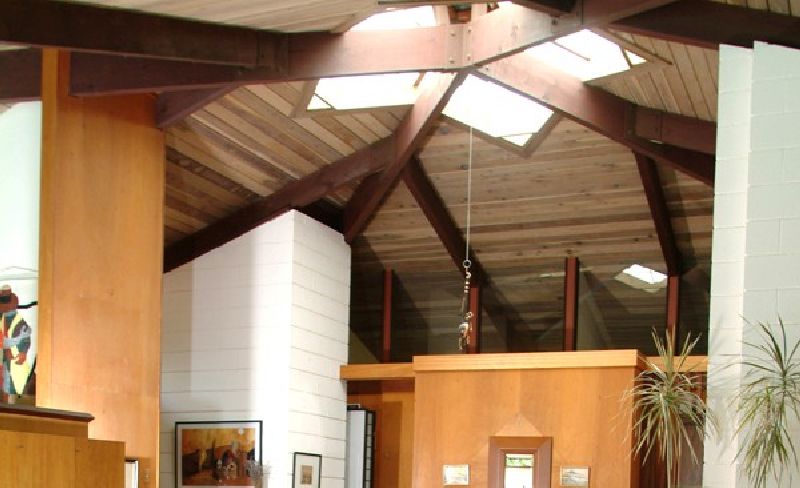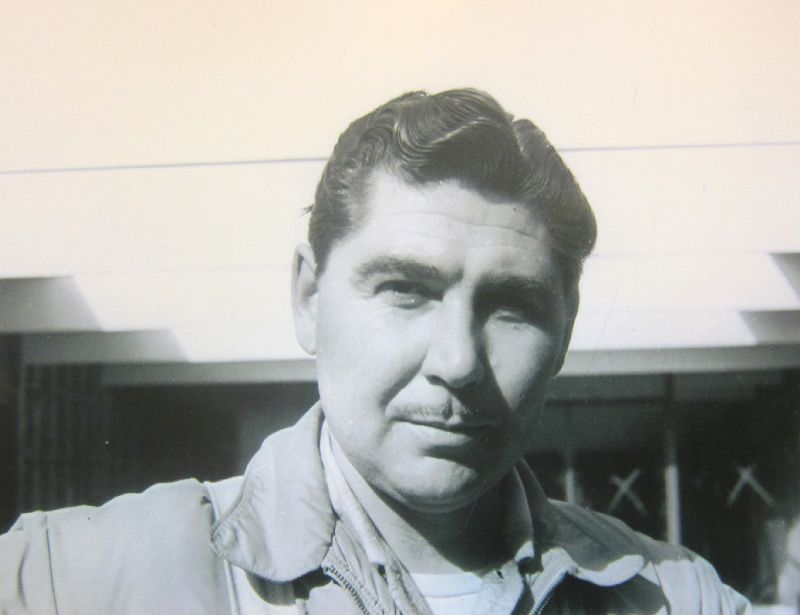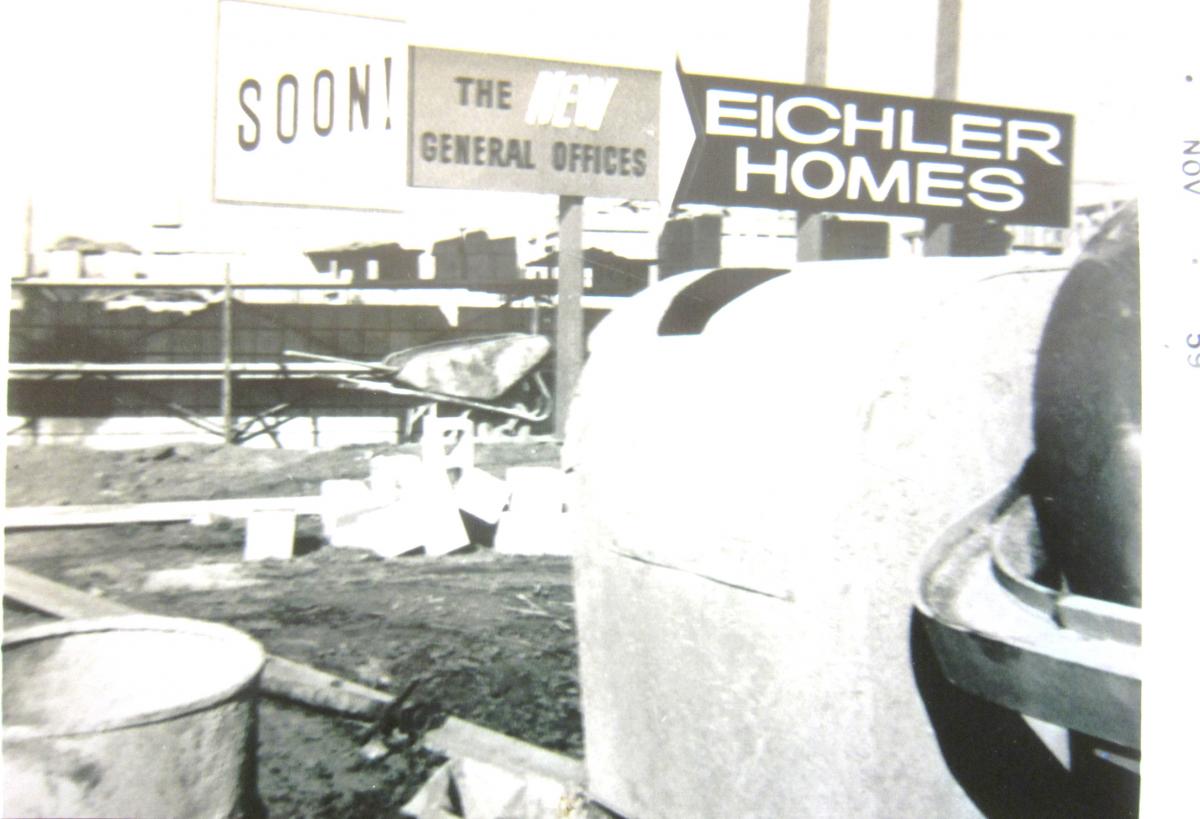
Longtime Eichler Carpenter Recalls Career
 |
|
|
Joe Eichler called him “the Kid,” but within a few years Aaron Wheeler, now 87, was serving as a troubleshooter for Eichler Homes, handling tough jobs. Today he looks back fondly on his years building Eichler homes and commercial buildings.
Wheeler and his close friend and working partner Ira Beasley started work for Eichler when they were in their 20s. The year was 1950 and Eichler was only a few years into the homebuilding business.
Wheeler, who became a construction superintendent a few years into the job, would stay with Joe Eichler for 15 years.
To this day, Wheeler remains an advocate of Eichler homes. “I tell you, Eichler homes are built good. They’re really good,” he says. “They can go through an earthquake, you might break a glass, but they hold together.”
Some people often say they were cheaply put together, he notes. “The reason why they say that is, the first ones we did, they used interior luann plywood, the Philippine mahogany, right over the studs. That would be a fire hazard because wood burns faster than drywall. That’s why people get that idea.”
 |
|
|
He worked on tract homes, and supervised construction of many custom Eichler homes, including those on the Stanford University campus. Wheeler oversaw construction of the Eichler office building at Edgewood shopping center in Palo Alto, he says.
And, Wheeler says, he was often called in to troubleshoot problems, including leaks in the Eichler homes at Diamond Heights in San Francisco.
But, Wheeler adds, “The material was number one material, the framing, the studs, the concrete, everything they used. I think it was real good stuff. They used premium redwood. The roof sheeting was very good, two-by-eight, or sometimes two-by-six, tongue-and-groove redwood.”
He notes that the roof fascia, the board that runs along the roofline, was attached with finger-jointing, like dovetails. He describes the “steel saddles,” made for Eichler by a Palo Alto manufacturer, that were used to attach posts to beams and to prevent movement.
Although building techniques didn’t change much over the years, he notes that by the late 1950s “they did start using more drywall and increased insulation.”
 |
|
|
Wheeler, who hails from Commerce, Oklahoma, spent time as a boy on a ranch in Jackson, California, near Daffodil Hill. He served in the Pacific with the Navy during World War II. On his return he studied up by reading Audels books on carpentry, then passed the test at the union hall in San Francisco.
Shortly thereafter he married his sweetheart, Marian. “I’ve been married 66 years,” he says with a smile. “We’re blessed,” Aaron added. “We still walk, and we hold hands while we walk.”
Wheeler recalls his early days with Eichler, hanging siding at Fairmeadow in Palo Alto, with its circular street plan.
“I worked there with my buddy for two to three years. We got pretty good at it. Me and him raced each other. We could do an entire room in an hour. We’d hang it, make it fit real tight. We had little black planes that we’d use to make it fit when we came to a corner.”
“We’d carry the sheets from house to house as we moved onto the next one. We kept jumping from house to house. It was production then, like automobile production. It was pretty neat, I thought.”
“Everybody just did one job so they got good at that job.”
Within a few years, Wheeler says, he was being called in as a troubleshooter. “I’ve been blessed with figuring things out. My uncles on my daddy’s side, they could build everything.”
 |
|
|
He was called in when problems arose with windows in the two-story Eichler townhouses at Diamond Heights.
“The wind was blowing and blowing and they would leak. It came down through the walls and messed the drapes up and the carpets,” Wheeler says, adding that some residents “got onto me like a mad bulldog.”
“We’ll get them right,” Wheeler told them. “It won’t take long.” Crews had to rebuild the window frames.
One of Wheeler’s more challenging assignments was building a custom Eichler home designed by Aaron Green, a Frank Lloyd Wright protégé, for the Stanford campus. “The house didn’t have a square room in it,” Wheeler recalls.
He later worked with Aaron Green on other custom homes designed by the architect, building the custom furniture Green designed for the homes.
In 1965 Wheeler went on his own, forming a construction company that one of his sons still runs. Wheeler and his wife live in a Saratoga tract home – not an Eichler – that he bought in 1953 while working for Eichler.
“I couldn’t afford an Eichler,” he says, noting that he was making about $2.20 an hour as a journeyman carpenter, and pumping gas at a gas station in the evenings for even less per hour. “(Eichlers) were mostly for college educated people who were pulling in better money.”
Although Wheeler never knew Joe Eichler well, he did some remodeling on Eichler’s home in Atherton, and would talk with him briefly while building his Palo Alto office building
“(Eichler) was a good guy. When I was back there doing his office he’d come in there and talk to me a little bit, but he never chit chatted.”
“I had some stock in Eichler, too,” Wheeler says. But it didn’t pay off. “I just kept it too long,” he adds with a laugh. “But that’s another story. I got it for bonuses.”
- ‹ previous
- 383 of 677
- next ›



